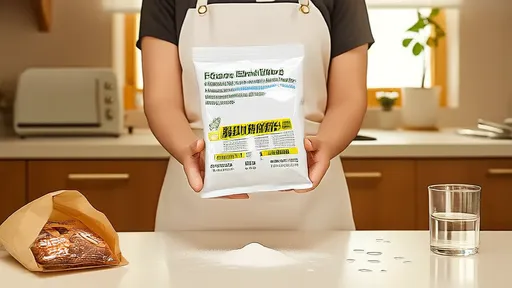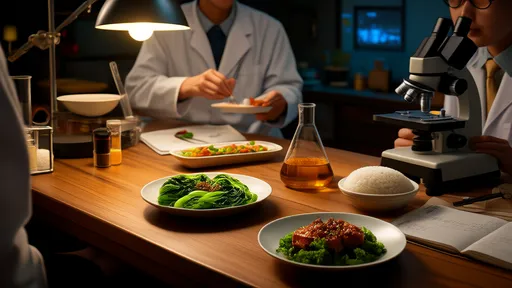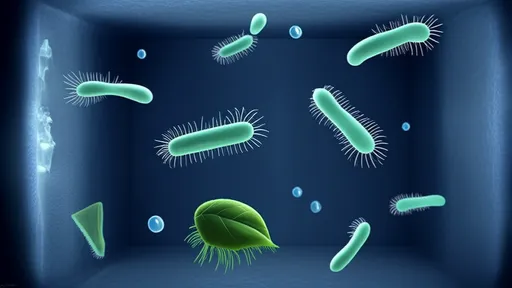For years, home cooks and health-conscious eaters have been warned about the dangers of overnight leftovers. The prevailing belief is that reheated dishes develop dangerously high levels of nitrites – compounds linked to cancer risks. But what if this common kitchen wisdom isn’t entirely accurate? A series of controlled experiments conducted by food scientists reveals surprising data that challenges long-held assumptions about food safety.
The fear stems from nitrites’ ability to form carcinogenic nitrosamines under certain conditions. Leafy greens and root vegetables naturally contain nitrates, which bacteria can convert into nitrites during storage. Conventional wisdom suggests this process accelerates when cooked food sits at room temperature or gets refrigerated overnight. However, recent laboratory tests paint a more nuanced picture.
Researchers prepared twelve common Chinese dishes – from stir-fried greens to braised pork – and measured their nitrite content at multiple stages. Immediately after cooking, all dishes showed negligible nitrite levels (0.2-0.5 mg/kg). Contrary to expectations, samples refrigerated for 24 hours displayed only modest increases (0.8-1.6 mg/kg) – well below China’s nitrite limit of 20 mg/kg for processed meats.
The real shock came from temperature-controlled testing. Leftovers stored at constant 4°C showed minimal nitrite formation even after 48 hours. Meanwhile, food left at room temperature (25°C) saw nitrites spike dramatically after 12 hours, particularly in vegetable dishes. This suggests proper refrigeration – not arbitrary time limits – determines food safety.
Microbial analysis revealed why. The nitrite surge in unrefrigerated food correlated with explosive bacterial growth. Refrigerated samples maintained stable microbial counts below 10⁶ CFU/g – the safety threshold. This evidence flips the script: Overnight storage isn’t inherently dangerous if temperature control prevents bacterial proliferation.
Certain dishes defied expectations entirely. Acidic foods like tomato-egg stir-fry showed decreasing nitrite levels during storage, likely due to vitamin C’s inhibitory effect. Fermented items like pickled vegetables displayed higher baseline nitrites but minimal subsequent increases. Meanwhile, protein-rich meats proved remarkably stable, with nitrite levels rising less than 15% after two days’ refrigeration.
Food chemists emphasize that nitrite toxicity depends on dosage and context. The 0.3 mg/kg nitrites in day-old greens pale beside the 30-50 mg/kg found in cured meats. More crucially, antioxidants in fresh food – like polyphenols in vegetables – may prevent nitrosamine formation even when nitrites are present. This explains why epidemiological studies fail to link homemade leftovers with increased cancer risk.
Practical implications are clear: Refrigerate leftovers promptly in shallow containers (to accelerate cooling), consume within 48 hours, and reheat thoroughly. These simple measures maintain nitrite levels 10-20 times below hazardous thresholds. The experiments also debunk myths about "toxic overnight spinach" – properly stored greens showed safe nitrite levels under 2 mg/kg after 24 hours.
This research highlights how food folklore often outpaces scientific evidence. While vigilance against foodborne illness remains crucial, the data suggests we’ve overstated nitrite risks in home cooking. As one researcher noted: "The dose makes the poison – and with proper handling, overnight leftovers deliver negligible nitrite exposure compared to many accepted foods in our diet."
Further studies are examining nitrite kinetics in different cuisines and storage methods. Preliminary data indicates blanching before refrigeration may further inhibit nitrite formation, while certain spices (like garlic and ginger) demonstrate bacteriostatic effects. What emerges is a reassuring message: With basic food safety practices, home cooks needn’t fear the occasional overnight dish.

By /Jun 7, 2025

By /Jun 7, 2025

By /Jun 7, 2025

By /Jun 7, 2025

By /Jun 7, 2025

By /Jun 7, 2025

By /Jun 7, 2025

By /Jun 7, 2025

By /Jun 7, 2025

By /Jun 7, 2025

By /Jun 7, 2025

By /Jun 7, 2025

By /Jun 7, 2025

By /Jun 7, 2025

By /Jun 7, 2025

By /Jun 7, 2025

By /Jun 7, 2025

By /Jun 7, 2025

By /Jun 7, 2025

By /Jun 7, 2025